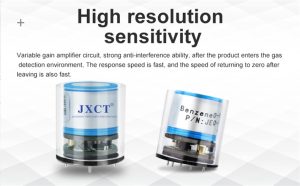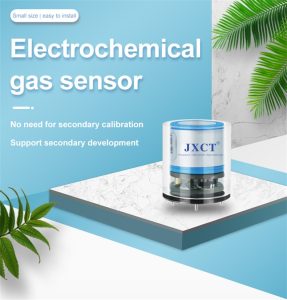Urban areas face significant challenges in maintaining clean and healthy air quality due to various pollution sources, such as vehicle emissions, industrial activities, and energy consumption. Tracking urban air pollution trends is crucial for sustainable city planning and effective pollution mitigation strategies. Gas sensors have emerged as valuable tools for monitoring air quality in urban environments, providing real-time data that can offer key insights for creating healthier and more sustainable cities. This article explores the importance of tracking urban air pollution trends using gas sensors and highlights the insights they provide for achieving sustainable urban development.

The Significance of Tracking Urban Air Pollution:
Air pollution in urban areas poses severe risks to human health, ecosystems, and the overall well-being of residents. By monitoring and analyzing air pollution data, decision-makers can gain a comprehensive understanding of pollution sources, patterns, and associated health impacts. Tracking urban air pollution trends is instrumental in developing targeted interventions, implementing effective policies, and fostering sustainable urban development.
Gas Sensor Technology for Monitoring Urban Air Quality:
2.1. Pollutants Monitored: Gas sensors can detect and measure various air pollutants, including nitrogen dioxide (NO2), ozone (O3), sulfur dioxide (SO2), carbon monoxide (CO), particulate matter (PM), volatile organic compounds (VOCs), and other harmful gases. Monitoring these pollutants provides critical insights into the overall air quality of urban areas.
2.2. Sensor Networks: Gas sensors can be deployed in networks across cities, enabling comprehensive and real-time monitoring of air pollution levels. These sensor networks provide spatially resolved data, allowing for the identification of pollution hotspots and variations in pollutant concentrations within different areas of the city.
2.3. Integration with IoT and Data Analytics: Gas sensors can be integrated with the Internet of Things (IoT) and data analytics platforms, enabling data collection, analysis, and visualization. This integration allows for the development of sophisticated air quality monitoring systems that provide actionable insights for urban planning and policy-making.
Insights from Tracking Urban Air Pollution Trends:
3.1. Identifying Pollution Sources: Gas sensor data helps identify specific pollution sources within urban areas, such as industrial emissions, vehicular traffic, and construction activities. This information is crucial for targeting interventions and implementing pollution control measures to reduce emissions from these sources.
3.2. Assessing Health Impacts: By tracking air pollution trends, researchers and policymakers can link pollutant exposure to health outcomes and identify vulnerable populations. This information guides public health initiatives, ensuring that resources are focused on protecting those most at risk.
3.3. Evaluating Policy Effectiveness: Gas sensors provide continuous monitoring of air pollution levels, enabling the evaluation of the effectiveness of pollution control policies and interventions. By assessing the impact of implemented measures, decision-makers can refine and adjust policies to achieve better air quality outcomes.
Promoting Sustainable Cities through Air Quality Monitoring:
4.1. Urban Planning: Tracking urban air pollution trends helps inform urban planning decisions, such as the placement of green spaces, residential areas, and transportation infrastructure. By considering air quality data, city planners can create healthier and more sustainable urban environments.
4.2. Transportation Management: Real-time air quality data from gas sensors assists in managing traffic flow, optimizing routes, and implementing congestion pricing strategies. This encourages the use of cleaner modes of transportation and reduces vehicular emissions in areas with high pollution levels.
4.3. Public Awareness and Engagement: Gas sensor data can be shared with the public through online platforms and smartphone applications, raising awareness about air quality issues and empowering residents to make informed choices. This promotes citizen engagement and collective action towards improving air quality in cities.

Challenges and Future Directions:
While gas sensors offer significant potential for monitoring urban air pollution, challenges such as sensor accuracy, calibration requirements, data validation, and sensor maintenance need to be addressed. Future advancements should focus on improving sensor performance, standardizing data collection and analysis protocols, and expanding sensor networks to cover larger areas of cities.
Conclusion:
Tracking urban air pollution trends using gas sensors plays a vital role in achieving sustainable cities with healthier environments. Gas sensors provide real-time data on pollutant levels, enabling decision-makers to identify pollution sou
 : +86 155 8830 2704
: +86 155 8830 2704 : jxdziot@gmail.com
: jxdziot@gmail.com
